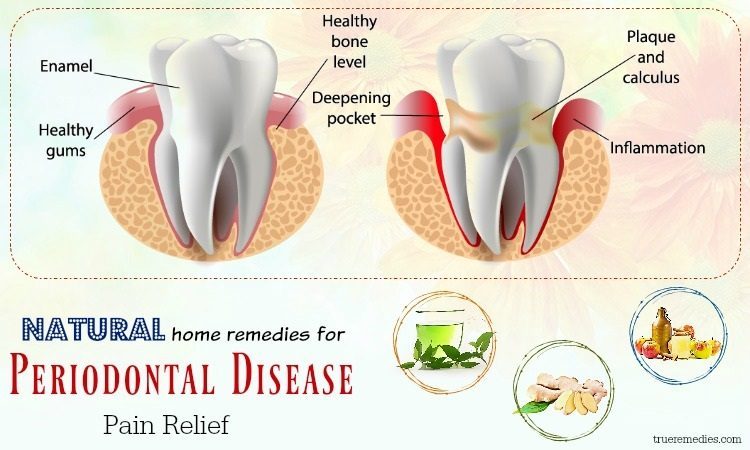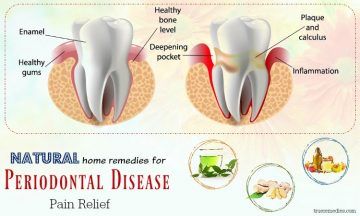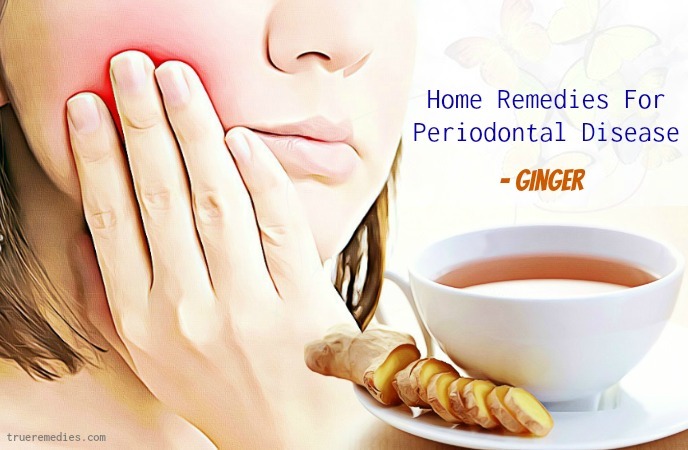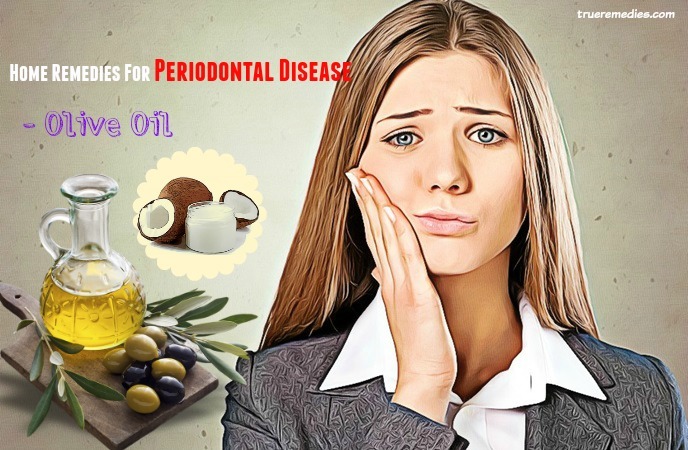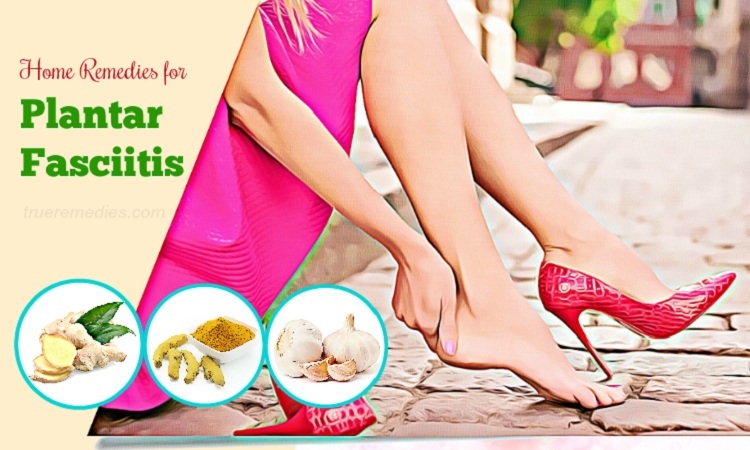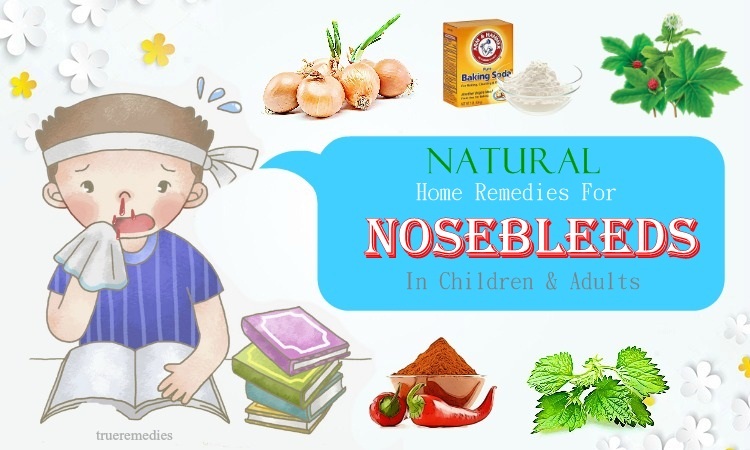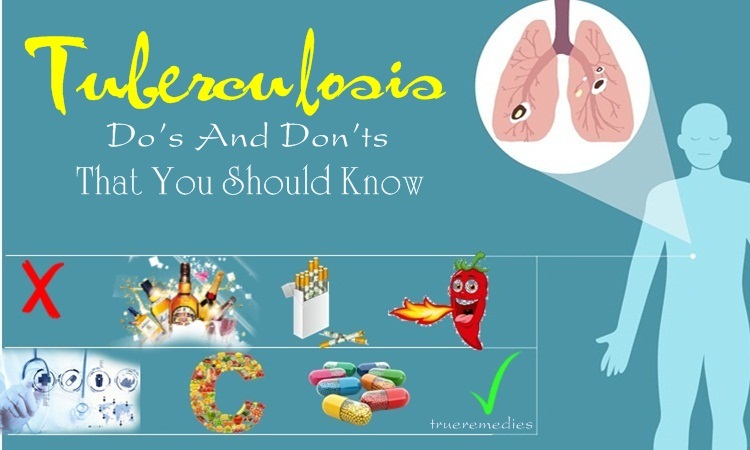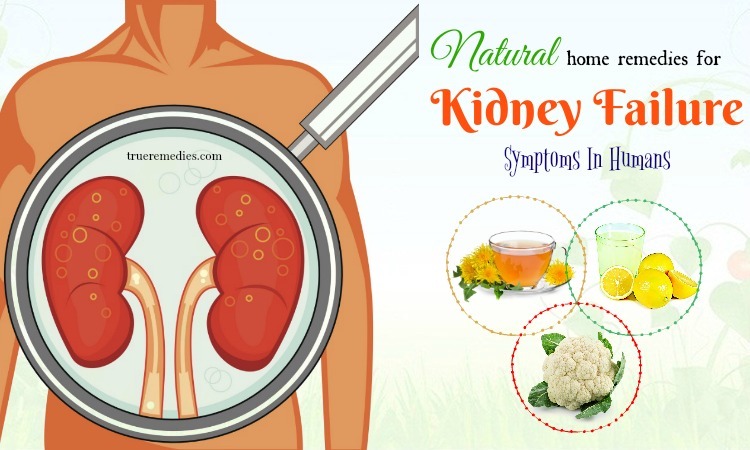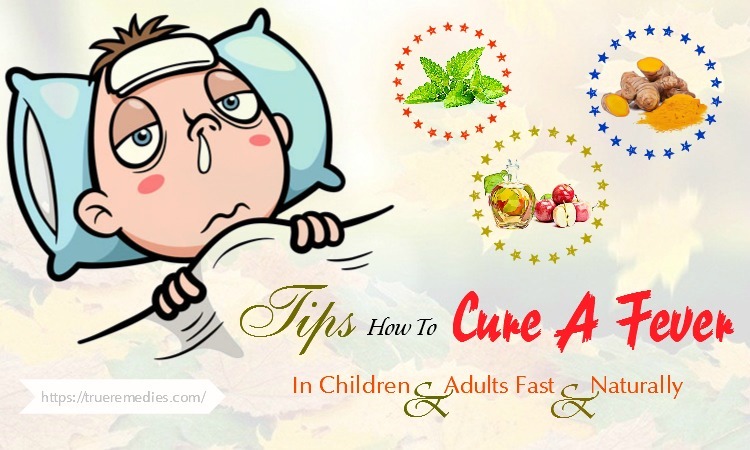Contents
Periodontal disease is actually a disease of the tissues surrounding teeth. It is the main cause of tooth loss, affecting health and aesthetics. You need to understand about the periodontal disease for prevention as well as timely treatment. The consequences of periodontal disease are especially serious.
If it is diagnosed and treated early, it can reduce the risk of tooth loss. I know that the reason you are reading this article of 10 Natural Home Remedies For Periodontal Disease Pain Relief is to learn how to treat periodontal disease at home, but before that, we would like to give you some fundamental information about this condition. That way, you can deal with it the right way.
What Is Periodontal Disease?
Periodontal disease is an organization around the teeth, which is responsible for keeping the teeth in the jaw. A healthy tooth is usually held in the jaw by the following factors: alveolar bone, ligaments and gums. The gums will cover the teeth to protect the sensitive tissues below, which will prevent bacteria from entering and damaging the teeth. Good gums help your teeth [1] [2]
When the mouth is not clean, leftover foods will cause the formation of plaque and tartar (tartar) occurs faster, this is the concentration of large bacteria. Bacteria will be nourished by the excess food clinging to the plaque, tartar. They metabolize the sugar, the powder in the plaque into the acid which can attack the surface of the tooth. This phenomenon will make the periodontal inflammation worse and lead to tooth loss.
Periodontal disease is directly related to the supportive tissue around the root of the tooth, including gum disease and tissue-damaging conditions. The periodontal disease causes the connective tissue between gums and teeth to loose, and the adherence function decreases, leaving the leftovers easily trapped in the space between teeth.
When periodontitis occurs, the infection starts from the gums, then spread to the structures of the underlying periodontal tissue, causing gums to become lost -attached to the teeth, collapsing gums and making periodontal pockets. Periodontal disease causes serious consequences if it is not treated promptly:
TrueRemedies Partner Solutions

Need a Help from the Leading Expert Online, Available 24/7?
They’re all here and ready to answer your questions online or by phone. Keep asking questions until you get the answer you need.
- Casing tooth decay, reduce chewing function.
- Causing pain in the temples.
- Causing gingival erosion, which allows the bacteria to attack, even causing permanent tooth loss.
- Causes of cardiovascular, pulmonary, or diabetes.
- Periodontal disease also causes premature birth in pregnant women.
What Are Common Causes Of Periodontal Disease?
Periodontal disease is usually caused by the underlying causes:
- The main cause of periodontal disease is poor oral hygiene conditions that allow food particles to stick around the teeth. Bacteria that accumulate in unsanitary plaque will cause gingivitis. Over time, plaque builds up to form tartar. Then, the gingival inflammation condition will be more severe and the disease transition is to be a periodontal disease. It will progress very quickly if your body does not have good resistance.
- Poor eating habits, scraped food, high acidity or smoking too much, and drinking too much alcohol also create conditions for bacteria to attack the periodontium.
What Are Symptoms Of Periodontal Disease?
Signs and symptoms of periodontal disease could include the following:
- Your gums are swollen, bleeding easily. When you press the gums, pus is released.
- Plaque is more at the root of the tooth, even spreading to the gums.
- You feel uncomfortable when chewing.
- You have bad mouth odor.
- The teeth are wobbly and sparse; the roots of the teeth are exposed because the gum gets down.
- In cases of severe disease, there are also periodontal pockets on the gums.
How Does Periodontal Disease Develop?
Periodontal disease progresses from mild to severe. In the early stages, the disease progresses quietly, the infected person will almost have no symptoms. They can only see the symptoms of periodontal disease when periodontal inflammation causes lesion which cannot be restored to the teeth.
People with periodontal inflammation go through four stages:
- The first stage: This is the period when the plaque and tartar formation, bacteria accumulate in the tooth, around the gum, teeth and interstitial. This stage is the beginning of the periodontal disease and the patient will not feel any abnormal signs in his or her mouth.
- Stage two is the period when inflammation begins to form. Gingival swelling, easily bleeding when there are external effects such as brushing, eating.
- Stage Three: The stage of widespread inflammation creates swollen periodontal pouches and contains bacteria and pus.
- Late Stage: The period when the alveolar bone and ligaments are destroyed by the bacteria, the gums of teeth drop causing teeth loose.
How To Prevent Periodontal Disease
- Brush Your Teeth Properly
Brush your teeth after eating and before going to sleep. Brush your teeth from top to bottom in a straight line. Do not brush your teeth in a horizontal line as it is difficult to clean the plaque in the gum line, tooth cavity. Always use a soft brush. The brush is tilted so that it can reach the edges between the teeth and gums which can help remove the plaque and gums.
- Do Not Smoke
Smoking will make plaque build-up quickly. Thus, it is good conditions for periodontal inflammation. So, don’t smoke to prevent periodontal disease.
- Use Of Dental Floss
Use dental floss to remove plaque, food debris from the teeth. Do not use toothpicks thumped through the teeth because it will open gap, causing bleeding and gradually lead to gingivitis. Be careful when using toothpicks.
- Regular Dental Checkups
You should go to a reputable dental clinic for the dentist to detect the disease and treat it promptly.
Who Is At High Risk At Periodontal Disease?
This condition is very common and can affect patients of all ages. However, you can control it by minimizing risk factors. People who have relatives with periodontal disease are also more likely to have periodontitis, so you should take care of your oral hygiene carefully.
Also, there are some other risk factors that increase your probability of developing this condition:
- Hormonal changes: Women of all ages seem to be at high risk of getting this condition. This includes young girls entering puberty and women entering menopause stages.
- Diabetes: People with diabetes are more likely to have infections than the general population. Periodontal disease, in fact, is a complication of diabetes. Thus, it is important for diabetics to have good oral hygiene to prevent any oral infections.
- HIV/AIDS: People with this condition are at higher risk of periodontal disease because they have weakened immunity and limited ability to combat infections.
- Lack of vitamin C: Poor oral health is among signs of a vitamin C deficiency. This will cause the gums to be inflamed and swollen.
- Smoking: It was shown that smoking may weaken the immune system, making it hard to fight against gum disease. Smokers with periodontal disease have a hard time to get their healed.
- Certain medications: Prescribed and OTC medications which cause dry mouth, oral contraceptives as well as anti-depressants, and some specific medications for heart disease could trigger gum disease.
- Teeth grinding or bruxism: This is one of common causes of periodontal diasese.
When To See A Doctor?
Healthy gums have a pinkish color. If they are suddenly swollen, dark red and bleeding easily, it may be due to periodontal disease. At this point, you should see your doctor right away for prompt treatment.
There, you have discovered some information about periodontal, it is time to find out what 25 best natural home remedies for periodontal disease pain relief are. Take a look at TrueRemedies.com!
Top 25 Effective Home Remedies For Periodontal Disease
1. Ginger
This is the first home remedy for periodontal disease for you to do at home. Ginger contains 2 to 3% oil, 5% resin, 3% fat, starch and spices such as zingeron, and shogaola. These spicy substances have a very good antibacterial effect. Ginger is used to reduce gingivitis, thereby reducing the condition of the periodontal disease.
Method 1: Only Ginger
To implement this method, please follow these steps below:
- Prepare 10-15 grams of ginger.
- Rinse ginger, then let it dry.
- Crush ginger, then use it to cover the area of periodontal disease.
- Leave for 4-5 minutes then rinse your mouth with water.
Method 2: Ginger Tea
To implement this method, please follow these steps below:
- Prepare 10-15 grams of ginger, 2 teaspoons of honey, and 300 ml of water.
- Rinse ginger, then let dry.
- Crush ginger, then use it to mix with water and honey. Stir well and use.
- Use the ginger juice to suck in your mouth for 1 minute, then drink.
You can use the ginger juice above to drink 2 times a day, 4-5 times a week for the best effective.
2. Blueberry
Among home remedies for periodontal disease, blueberry is one of the most effective. Blueberries are the ingredients used to make effective periodontal disease medications. Blueberry has a natural antibacterial component against gum disease that prevents plaque from forming – one of the main causes of periodontal disease.
Method 1: Only Blueberry
The way to implement this method is very simple, you only need to eat some blueberries in a day, 5-6 times a week. You can also drink blueberry juice instead for the best effective.
Method 2: Blueberry And Salt
To implement this method, please follow these steps below:
- Prepare 10-15 grams of blueberry, 3-5 grams of salt.
- Rinse the blueberry, then let it dry.
- Mix blueberry with salt then place them in a jar and leave for 10 days.
- Add 2 to 3 tablespoons of the mixture above to 100 ml of water then stir well.
Use the mixture to rinse your mouth 2 times a day, 6 times a week.
3. Apple Cider Vinegar
This is another must-try home treatment in this list of home remedies for periodontal disease. Apple cider vinegar contains a lot of acetic acid, proteins, enzymes, antioxidants, amino acids, K, P, Ca, Mg, Cu, vitamins A, B1, B2, B6, C, and E, bioflavonoid, pectin and many micro necessary for the body. Apple cider vinegar helps to remove the smell of breath and stains of coffee. The enzymes in apple cider vinegar will also help cure plaque, infection, and kill harmful fungal bacteria.
They way to implement this remedy is very simple, you only need to follow these steps below:
- Take 1-2 teaspoons of unfiltered, raw apple cider vinegar to add in 1 glass of water.
- Use the mixture to drink or you can also rinse your mouth with a mixture of apple cider vinegar and water in a ratio of 1:1
Note:
Long term undocumented use of this ingredient could lead to health problems, such as reduced bone density or low potassium levels. Also, it can interact with diabetes as well as cholesterol medications.
4. Salts
Salt is very effective in the treatment of the periodontal disease. Salt has strong bactericidal effect and does not endanger the patient.
Method 1: Only Salts
The way to implement this method is very simple, you only need to use salt water to rinse your mouth 2 times a day for best effect.
Method 2: Salt and Lemon
To implement this method, please follow these steps below:
- Prepare a lemon, 3-5 tablespoons salt.
- Rinse the lemon, then grind it by the grinder.
- Add salt and stir well.
- Use the mixture to cover your periodontal disease. Leave for 15 minutes then rinse your mouth with water.
5. Baking Soda
This remedy is one of little – known home remedies for periodontal disease. Baking soda is capable of neutralizing the acids in the mouth, preventing bacteria from attacking the teeth. Baking soda has the main ingredient is sodium bicarbonate (NahCO3), which is able to neutralize acids in the mouth to help prevent bacteria from attacking the teeth. Therefore, baking soda has an anti-decay effect, prevent gingivitis, and clean plaque which reduces periodontal treatment.
Method 1: Only Baking Soda
To implement this method, please follow these steps below:
- Mix the 1/2 teaspoons of baking soda with a little warm water.
- After brushing, use this mixture to apply on the neck, below the gums and rub lightly for a few minutes.
- Then rinse thoroughly with warm water so that the plaque can tread out.
Method 2: Baking Soda, Lemon, And Salts
To implement this method, please follow these steps below:
- Make a mixture of small lemon peels, baking soda and salt by blending all ingredients together.
- Use the mixture to brush your teeth and leave for 10 minutes.
- Rinse your mouth with water.
You can implement this method 1-2 times a week to avoid damage to the enamel.
Method 3: Baking Soda And Strawberry
To implement this method, please follow these steps below:
- Prepare a strawberry, 1/2 teaspoon of baking soda.
- Rinse the strawberry, then grind it by the grinder.
- Mix strawberry with baking soda.
- Use a soft brush to gently rub this mixture onto your teeth. Then brush your teeth with a toothpaste to clean the mixture.
6. Quicklime
Quicklime is one of the most used ingredients in the construction industry, but it is also known as the secret to reduce periodontal disease condition, especially when combined with alcohol.
To implement this remedy, please follow these steps below:
- Prepare a moderate amount of quicklime, pure alcohol.
- Grind the quicklime totally and place in a bottle.
- Pour the pure alcohol into it and shake it until the solution in the bottle turns white slightly silver.
- Use this solution to rinse mouth for about 10 to 15 minutes in the morning when you wake up.
Be advised not to take too much quicklime as it can react strongly with water in alcohol and cause a large heat.
7. Clove Oil
The next treatment in this list of home remedies for periodontal disease is clove oil. Clove contains a very powerful anesthetic called eugenol. Eugenol is not just an anesthetic; it also causes numbness and pain reducing. In addition, it is antiseptic and helps kill bacteria to minimize tooth infection. Clove oil is extremely antibacterial, anti-infection. Therefore, this is one of the simplest ways to get rid of periodontal disease.
Method 1: Only Clove Oil
To implement this method, please follow these steps below:
- Use a light cotton earlobe to put into the clove oil then apply around the area with periodontal disease.
- Leave the clove oil in your mouth for a few minutes then spit out and rinse off your mouth with water.
Clove oil will cause mild numbness in the periodontal inflammation, the pain will gradually decrease. You can do this remedy twice a day for the best effect.
Method 2: Clove Oil And Salts
To implement this method, please follow these steps below:
- Prepare 1-2 tablespoons of clove oil, 3 tablespoons of salt, 100 ml of water.
- Mix clove oil, salt and water. Stir well.
- Use the mixture above to soak in your mouth for 3-4 minutes, then glaze your mouth.
- Rinse your mouth with water.
8. Coconut Oil
This is one of the little-known home remedies for periodontal disease. Coconut oil is very good for teeth. It helps remove plaque from the teeth. Coconut oil has important minerals that inhibit the growth of streptococcus, a bacterium active in the oral cavity, which is the major cause of tooth decay and plaque formation. The special composition of coconut oil is capable of eradicating streptococci – one of the bacteria causing acid to destroy human enamel [3]. The dirt, bacterial plaque in our teeth dissolves in fat as an oil. Therefore, coconut oil has the ability to clean and maintain healthy teeth.
Method 1: Only Coconut Oil
The way to cure periodontal disease with coconut oil is very simple, you just use coconut oil to rub all the teeth (can use a soft towel or toothbrush daily) or you can use coconut oil mix with water in ratio of 1:2 to rinse your mouth for the best effect.
Method 2: Coconut Oil And Baking Soda
To implement this method, please follow these steps below:
- Prepare 2 teaspoon of coconut oil, 2 teaspoon of baking soda.
- Mix coconut oil and banking soda together.
- Use the mixture above to brush your teeth once a day for the best effect.
9. Olive Oil
The next one in this of home remedies for periodontal disease is olive oil. Olive oil contains vitamins A and E will help the gums to be rosy and firmer. Olive oil helps to remove toxins from the gums that may be a cause of stains on the teeth. Fat from olive oil removes stains on the enamel which does not disappear by regular brushing, (most of them are liposoluble). The gummy plaque that forms in the gum line will also be cleaned if you perform a tooth whitening routine with olive oil daily.
Method 1: Only Olive Oil
To implement this method, please follow these steps below:
- Use cotton wool to put into olive oil then apply evenly and rub thoroughly on teeth for 5 minutes.
- Then you brush your teeth again.
You should maintain this way 2 – 3 times per week for the best effect
Method 2: Olive Oil And Coconut Oil
To implement this method, please follow these steps below:
- Prepare 3 tablespoons of olive oil and 3 tablespoons of coconut oil.
- Mix the olive oil and coconut oil in a 1: 1 ratio and use it to rinse your mouth in the morning. The dosage is enough for one time to rinse your mouth is about 10ml.
- Then, brush your teeth with toothpaste.
10. Lemon
Lemon is an excellent source of vitamin C and fiber. It contains many plant compounds, minerals and essential oils. This fruit contains natural antimicrobial ingredients that fight against gum disease and prevent the formation of plaque on the teeth.
Method 1: Only Lemon
The way to implement this method is very simple, you only need to use a lemon or lemon juice to apply to your teeth with periodontal disease. You can use this remedy daily for the best results.
Method 2: Lemon And Salt
Lemon and salt are two foods that contain a strong antiseptic. When they are combined together, they will bring unexpected effects without danger for patient.
To implement this method, please follow these steps below:
- Prepare 1 lemon, 1 teaspoon salt.
- Squeeze lime juice into a small bowl, add 1 teaspoon of salt.
- Mix this mixture and stir well to form a paste.
- Use this mixture to brush your teeth within 2 minutes and rinse your mouth with clean water.
You can apply this method 2-3 times per week. Do not be abusive this method much to avoid affecting the enamel.
Method 3: Lemon, Baking Soda, And Salt
To implement this method, please follow these steps below:
- Prepare a lemon, a teaspoon of baking soda, a teaspoon of salt.
- Rinse the lemon and grind it by the grinder.
- Mix lemon with baking soda and salt. Then stir well.
- Use the mixture above to brush your teeth instead of toothpaste.
11. Tea Tree Oil
Tea tree oil is well-known for its anti-inflammatory properties. This helps soothe the inflamed and irritated gums. In accordance with a study published in 2008, it was found that using tea tree oil topically could help reduce gingivitis and gum bleeding. Additionally, the antibiotic and antiseptic properties of tea tree oil also handle localized infections, not to mention the ability to prevent gum disease from worsening and speed up your recovery.
Take the steps here:
- Add several drops of tea tree oil to your regular toothpaste
- Brush your teeth twice per day for a few weeks
12. Green Tea
Renowned for the age-fighting ability, green tea was proven to help promote the overall health of teeth and gums. Japanese researchers have discovered that drinking a cup of green tea daily reduced the risk of periodontal disease, improved the attachment of gums to teeth, and decreased gum bleeding [4]. The more cups of tea you drink, the better the results.
13. Amla
This is another good option among home remedies for periodontal disease introduced here. This ayurvedic practice is claimed to play as a rebuilder of the oral health. Many researchers said that amla can support the development and healing of connective tissues [5]. Thus, it is used as a mouth rinse. Or, you can take it orally in the form of a capsule for long term benefits.
14. Septilin
Another Ayurvedic practice you can do at home is septilin. This ingredient can boost the immune system and combat a lot of infections. being a proprietary blend of Guduchi, amla, Guggulu, licorice, and some other compounds, septilin can support the immune system and decrease inflammation [6].
15. Flossing
Upon eating, food particles will stuck to your teeth, causing the harmful bacteria to spread and damage your pearls. Hence, to prevent this, you need to floss your teeth regularly. Do it by using toothpicks. This will help eliminate food particles from your teeth and maintain their healthy state.
The above-mentioned home remedies for periodontal disease are claimed to be able to reduce the symptoms of heavy or prolonged periods. Choose some of them and alternate them in your treating to see how effective they are. If you have any contributing ideas about our article of “Top 25 Natural Home Remedies For Periodontal Disease Pain” introduced in Home Remedies Category, do not hesitate to drop your words below this post. We will answer as soon as we could.

